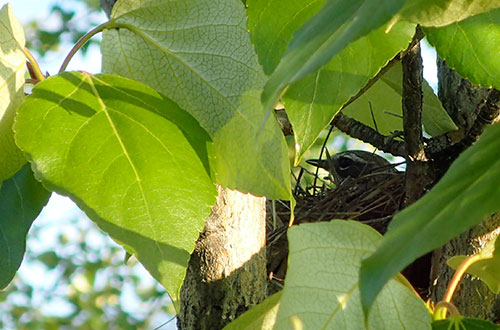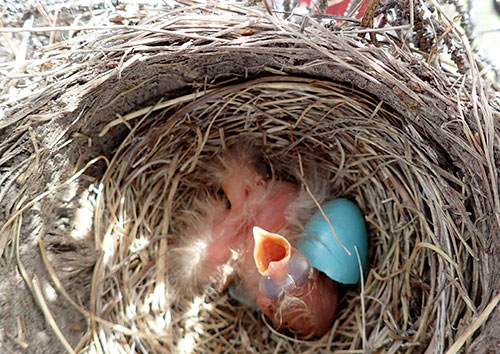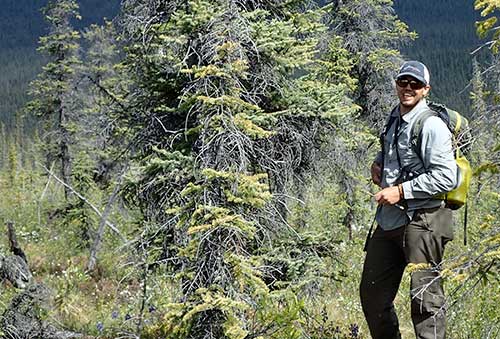
The northern boreal bird nurseryBy NED ROZELL
June 22, 2015
This dark spot on the nighttime map of North America is not always in this active state, with the squeak of bank swallows overhead and passing bumblebees so heavy with pollen they fly like water balloons. A few months ago, this gray river was hard as a stone. An online thermometer nearby registers a dependable minus 50 F every winter.
A yellow-rumped warbler sits on a nest near the Middle Fork of the Chandalar River.
In the past few days, meteor astronomer Peter Jenniskens, Fairbanks guide Garrett Jones and I have noticed that looking for meteorites is a lot like searching for bird nests. We find none of the former but a few dozen of the latter.
A robin chick in a nest near the Middle Fork of the Chandalar River.
Garrett is the most frequent nest-finder, specializing in robins with newborn chicks that reach with open beaks to his camera lens. Near a nest in a tangle of spruce branches, the mother chips from a neighboring tree. If the four in this nest survive, they will grow to full size on the insect riches of this country. In a few months, they will show up on a lawn in Kansas City or a hill outside Mexico City. We chose to camp on an island of the Middle Fork Chandalar River. The leafy place is also the choice of several mother songbirds. When he walks to his tent, Peter can't help but flush a white-crowned sparrow from her nest woven into willow stems. And the junco basement apartment he found 50 yards away may produce a chick that arrives as a handsome slate-and-white adult at his feeder in Mountain View, California this December.
Wilderness guide Garrett Jones of Fairbanks next to a spruce tree hosting a robin's nest at eye level.
The warbler has had enough of us. She jumps to reveal five cream-colored eggs. Before summer is over, the chicks will leap into the air and leave the Chandalar country. They will flap and glide beyond the cooling forest of spruce and muskeg. They will follow the spine of the Rockies, pausing a few times to feed. When the deep cold returns to this country and the online thermometer at Chandalar Lake reads minus 48, the warblers will be hopping branches in the steamy mangrove jungles of Panama.
Since the late 1970s, the University of Alaska Fairbanks’ Geophysical Institute has provided this column free in cooperation with the UAF research community.
|
||


